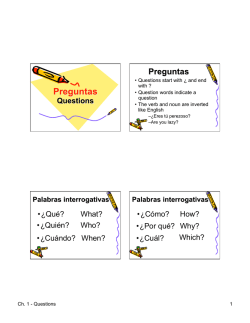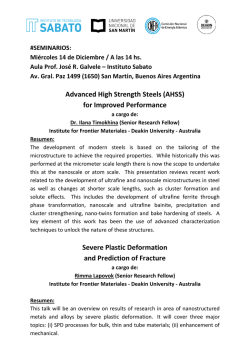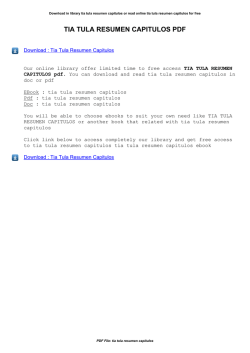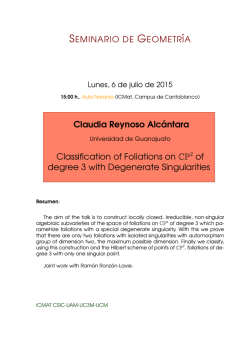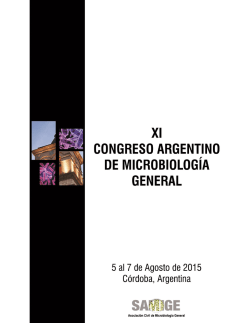
What does Summarizing Mean
Summary of Fiction and Non-Fiction Text Who? What? When? Where? Why? How? What does it mean to Summarize? Fountas and Pinnell remind us that as readers, we are constantly extracting information from a piece of text and condensing that information in some type of summary form. To summarize a piece of text, a reader need not just recap the text after reading, though that is indeed a needed skill. Readers must constantly engage in some sort of ongoing interpretation of what they are reading, by putting together what has been read so far as they continue to process the text. A reader must be able to identify information while reading, extract that information from the print, and form an ongoing synopsis of what it means. The art of summarizing involves bringing all that information in a concise form so that the reader then takes that information from the text and makes it his own. Ultimately, it is important to remember that summarizing is an in-thehead strategy whose sole purpose is to help the reader comprehend text. Even though students are required to write or select a good summary on proficiency tests, we want the learner to be able to select the important ideas and carry them forward as tools of thought. —Fountas and Pinnell, 2001 Challenge of Summary: Summary is a difficult skill for students for a variety of reasons. First, the student must identify the genre — generating a summary of narrative text is different from summarizing expository text. Second, the student must be able to discriminate between trivial details and important ideas. Good summaries do not have many trivial details. Finally, if the passage being summarized is narrative, then the student must identify information that is important to the plot. And if the passage is expository, the student must identify information that is important to the topic. Summary in the TEKS Students in 3rd grade are expected to: Students in 4th grade are expected to: Students in 4th grade are expected to: Fig. 19 (E) summarize information in text, maintaining meaning and logical order Fig. 19 (E) summarize information in text, maintaining meaning and logical order Fig. 19 (E) summarize and paraphrase texts in ways that maintain meaning and logical order within a text and across texts Note: Please don't be confused by the TEKS for Theme and Genre which state: Students in 3rd grade are expected to: Students in 4th grade are expected to: Students in 4th grade are expected to: 5(A) paraphrase the themes and supporting details of fables, legends, myths, or stories; 3(A) summarize and explain the lesson or message of a work of fiction as its theme; 3(L3) summarize and explain the lesson or message of a work of fiction as its theme; Or the TEKS for Sequence of Events which state: 8(A) sequence and summarize the plot's main events and explain their influence on future events; 6(A) sequence and summarize the plot's main events and explain their influence on future events; 6(A) describe incidents that advance the story or novel, explaining how each incident gives rise to or foreshadows future events; Or the TEKS for Main Idea which state: 13(A) identify the details or facts that support the main idea; 11(A) summarize the main idea and supporting details in text in ways that maintain meaning; 11(A) summarize the main ideas and supporting details in a text in ways that maintain meaning and logical order; The word Summary or Summarize is found throughout the TEKS. It is confusing to students, however, when strategies for summarization are taught at the same time as strategies for Main Idea, Sequence of Events, or Theme. Summarizing fiction and nonfiction text needs to be taught explicitly, and students should be able to clearly describe how to create a summary, what a good summary is, and how summary is different from (for example) main idea. Teaching Summarization with Narrative Text Learning Intentions: o To extract the important elements from a piece of text for the purpose of comprehending that text. o To reduce large pieces of text into the bare essentials including the gist, the key ideas, and the main points worth remembering. o To authentically construct a short paragraph that includes the main ideas of the text. Lesson 1: Somebody-Wanted-But-So-Then Strategy (for Narrative Text): Materials: Previously read text or familiar class text Teacher completed summary on an overhead or chart Chart paper for posting Multiple copies of a short piece of text Overview: The strategy "Somebody-Wanted-But-So-Then" is used to help students understand plot elements such as conflicts and resolutions. It can be used as a “during reading” or “after reading” strategy. Student can complete a chart or graphic organizer that identifies the character, the goal of the character, what problems or conflicts that are being faced, and what the resolution of the conflict is. Suggested Teaching Strategies: 1. Teacher selects a piece of text that has previously been read with the class or one with which the class is most familiar. 2. Teacher models the SWBST strategy on a chart or an overhead and uses the information to write a summary of the text. 3. Students analyze what makes it a summary and discuss as a whole group. Teacher begins a criteria chart that is posted for all to use. For example: Strategy for Narrative Summary: Somebody (identify the character(s) Wanted (describe the character’s goal) But (describe a conflict that hinders the character) So (describe how the character reacts to the conflict) Then (describe the resolution of the conflict *Remember to focus on information that is most significant. Estrategia para resumir relatos: Alguien (identifica al personaje) Quería (describe el objectivo del personaje) Pero (describe un conflicto que impida al personaje) Así que (describe cómo el personaje reacciona al conflicto) Luego (describe la resolución del conflicto) *Acuérdate de centrarte en la información más importante. (A point to be made should include that an author’s message can be written in a short paragraph form of 3-5 sentences.) 4. Teacher then selects a piece of text to be read in a shared reading format. (“Begin the process with short texts (perhaps a legend or fable) that do not have too many details and are fairly easy to summarize,” say Fountas and Pinnell). 5. Work together as a class to create a group summary, selecting and deleting details. Compare the work to the criteria chart to check for correctness. 6. Leave the work posted so that students have a model to refer to for future work. Examples: Somebody Wanted But So Then The Big Bad Wolf Pigs for dinner They hid in the brick house. He went hungry. The pigs celebrated. Anne Frank To hide from the Nazis Someone turned her in She died in a concentration camp. Her story was shared with the world. Adolf Hitler To control all of Europe The Allies fought against him He killed himself when Germany was defeated. The Allies won the war. Christopher Columbus To sail to India to buy spices He ran into the Caribbean Islands He claimed the area for Spain. Europeans began to settle the "New World" Thomas Edison To invent the incandescent lightbulb His lightbulb blackened (the Edison effect) It later led to the electron tube The electronics industry was born Stephen Hawking To be a mathematician His father wanted him to be a chemist He combined science and math to study black holes in the universe. He became one of the most respected physicists in the world. Alguien Quería Pero Así que Entonces El Lobo Feroz Comerse a los cerditos Se escondieron en la casa de ladrillo Se quedó con hambre. Los cerditos festejaron. Ana Frank Esconderse de los Nazis Alguien la entregó a las autoridades Murió en un campo de concentración. Su historia fue compartida con todo el mundo. Adolf Hitler Quería controlar toda Europa Los Aliados lucharon contra él Se suicidó cuando Alemania fue derrotada. Los Aliados ganaron la guerra. Cristóbal Colón Navegar a la India para comprar especias Dio con las Islas del Caribe Reclamó el área para España. Los europeos empezaron a colonizar el “Nuevo Mundo”. Thomas Edison Inventar la lámpara incandescente Su bombilla se oscurecía (el efecto Edison) Luego condujo al tubo de electrones, que es la base de la industria electrónica. Nació la industria electrónica. Stephen Hawking Ser matemático Su padre quería que fuese químico Él unió la ciencia y la matemática para estudiar agujeros negros en el universo. Se convirtió en uno de los físicos más respetados del mundo. Narrative Summary Somebody Wanted/Needed But Three to five sentence summary Prove It! Detail: Detail: Detail: So Then Resumen Narrativo alguien quería/ necesitaba pero Resumen de 3 - 5 oraciones Compruébalo Detalle: Detalle: Detalle: así que entonces Lesson 2: Plot Diagram Strategy (for Narrative Text) Materials: Previously read text or familiar class text (copies available to the students) Teacher completed summary on an overhead or chart Chart paper for posting Plot Diagrams Overview: The Plot Diagram strategy is aligned with the new (2009) TEKS in that it focuses on summaries that maintain logical progression, and can also be used to emphasize how characters respond to situations and change over time. The Plot Diagram begins with a graphic organizer that students fill out inserting relevant details from the story. Then the students use that graphic organizer to actually write a coherent summary of the story. Suggested Teaching Strategy: 1. After reading aloud a short, narrative passage of text, the teacher models the Plot Diagram strategy using the plot graphic organizer. The teacher fills in the graphic organizer, and then works with the students to transfer the information from the graphic into a good summary. Those resources are kept available for the students to refer to as an Anchor of Support. 2. The next day, after reading aloud a short, narrative passage of text, the teacher divides the students into small groups. The students work with chart paper to create a Plot Diagram graphic, and then to transfer the information from the graphic into a good summary. The students then present their summary to the class. 3. The next day, students are given simple leveled readers to read. Then they transfer the information from the short, narrative text into the graphic organizer, and finally into a summary. Sample Plot Diagram: What's the Problem? The wolf is hungry and he wants to eat the pigs. He blows down the house of straw, and he blows down the house of sticks. Those pigs run and hide in the house of bricks. How does the story Begin? The three little pigs decide to build their houses out of straw, sticks, and bricks. What's the Resolution? The wolf can't blow down the house of bricks. It's too strong. The pigs are safe in the house of bricks, and they are very happy. Characters & Setting Three little Pigs and the Big Bad Wolf at the pig's houses. Summary: Three little pigs decided to build houses. The first built his house of straw, the second built his house of sticks, and the third little pig built his house of bricks. A big bad wolf came along, and he was hungry. He wanted to eat the little pigs. First he blew down the house of straw, and that pig ran to the house of sticks. Then the wolf blew down the house of sticks, and the two pigs ran to the house of bricks. The wolf tried to blow down the house of bricks, but it was too strong. The three little pigs were safe in the house of bricks. They danced around singing, "Who's afraid of the big, bad, wolf?" Plot Diagram Summary What's the Problem? How does the story Begin? What's the Resolution? Characters & Setting Summary: Teaching Summarization with Nonfiction Text Overview: The reporter’s formula strategy: Who, Did What, When, Where, Why (sometimes How)? is used to help students understand summarization of nonfiction text. It can be used as a “during reading” or “after reading” strategy. Student can complete a chart or graphic organizer that identifies the main idea and important details of a piece of nonfiction text. Follow the same lesson procedures as written for narrative summary. A criteria chart will be developed with the students and might look like this: Strategy for Nonfiction Summary: Estrategia para resumir no ficción: Who/What is the passage mostly about? (topic or subject) What is important about the topic or subject? When does this take place? Where does this take place? Why is the topic or subject important? How does this occur? ¿De quién (o de qué) trata principalmente el texto? (tema o asunto) ¿Qué es lo importante del tema o asunto? ¿Cuándo sucede esto? ¿Dónde sucede esto? ¿Por qué es importante el tema o asunto? ¿Cómo sucede esto? See graphic organizer charts that follow. These can be enlarged, laminated and posted in classrooms for student reference. Summary for Non-Fiction Title: Who/What is the most important subject in this passage/article? What is important about that subject? When does/did this take place? Where does this take place? Why is the subject important? How does/did this occur? Write a 3 - 5 sentence summary. Resumen expositivo Título: quien-¿Hay algún tema importante en este pasaje? que-¿Qué es lo mas importante del tema? cuándo-¿Cuándo ocurrió esto? dónde-¿Dónde ocurrió esto? por qué-¿Por qué es importante el tema? cómo-¿Cómo ocurrió esto? Resumen de dos o tres oraciones Example Anchor Chart Using the Reporter’s Formula to Summarize Non-Fiction Who/What What is most important? is most important about them? Our Summary: Where Did this occur? When Did this occur? Why Is the subject important? How Did this occur? Example Anchor Chart Usando la fórmula periodística Para resumen de No ficción ¿De quién o de qué se trata principalmente el texto? ¿Qué ¿Cuándo es lo importante del tema o asunto? sucede esto? Resumen: ¿Dónde ¿Por qué sucede esto? es importante el tema o asunto? ¿Cómo sucede esto? Summary Stems • Which is the best summary of this selection? • Read the first sentence of the summary below: _______________________________________________________ Which of the following completes the summary above? Non-Fiction Fiction Teach: Teach: Reporter’s Formula Somebody, Wanted, But, So, Then Plot Diagram Emphasize: Not too many details, and must describe the plot of the story. WHO/WHAT is the most important subject? _______ WHAT is most important about? WHERE did this occur? WHEN did this occur? WHY is subject important? HOW did this occur? Sts write summary using reporter’s formula and match their summary to the choices. Resumen Ejemplos de STAAR • ¿Cuál es el mejor resumen de este artículo? • Lee la primera oración del siguiente resumen: _______________________________________________________ ¿Cuál par de oraciones termina mejor el resumen? No ficción Ficción Enseñe: Enseñe: la fórmula periodística Alguien, Quería, Pero, Así que, Luego ¿De quién (o de qué) trata principalmente el texto? ¿Qué es lo importante del tema o asunto? ¿Cuándo sucede esto? ¿Dónde sucede esto? ¿Por qué es importante el tema o asunto? ¿Cómo sucede esto? *Sin detalles* Los estudiantes escriben un resumen que utiliza la fórmula periodística y relacionan su resumen con las opciones. Summary Frames From Bobb Darnell, Ed.D. [email protected] 9/05 Summary Frames are Powerful Tools for Teaching Independent Reading, Thinking and Writing. They give the student some structure to support their writing, and help students to see that summaries can come in a lot of forms. Obviously, a narrative summary would be different from an expository summary. But even within a genre a summary focusing on a sequence of events would be different from a summary focusing on problems and solutions. Too often our students think that a summary has information from the beginning, middle, and end of the story. That's often true, but a GOOD summary is concise and focuses on the relevant information, including important details, but omitting less important information. Practice with Summary Frames can help students understand that the qualities of a GOOD summary depend upon the information the author of the summary wants to emphasize. Sequence Summary Frame In order to __________ you must follow several steps. First, _____________________. Then, ____________________. Next, _____________________. Finally, ___________________. Chronological Summary Frame ____________has a specific order. At the beginning _______________.. After that, _____________________. Then, ____________________. Next, _____________________. The, ____________ ended when ____________________. Compare-Contrast Summary Frame ______________ and _____________ are alike and are different in several ways. First, they are alike because __________ but they are different _________. Secondly, ______ is ________ while ________ is __________. Finally, _______ and ________ are alike because _______________. But, they are different because ___________. Problem-Solution Summary Frame The problem began when __________. The ___________ tried to __________. After that, ________________. Then, __________________ The problem was finally resolved when _______________. Definition/Word Meaning Summary Frame The word/concept __________ is important to (subject) _____________. It relates to (category or big idea it belongs to) ___________. One main characteristic of (word/concept) is _______. Another key characteristic/element is _____________. An example of this word/concept is _________. Main Idea/Details Summary Frame The main idea of this passage is ________________________. One fact or example that supports this main idea is _____________________. Another fact or example that supports this main point is _________________. In addition, ____________________. Finally, ________________________ illustrates that (main idea) _______________________. Cause/Effect Summary Frame In order to understand the (effect/result) _________________ you must identify the causes. The first cause of (effect/result)_______ is _________________. Secondly, ____________________ was another cause of (effect/result) ___________. A third cause of (effect/result)_______ is __________. It is clear that (effect/result)__________ has a number of contributing causes. Character Trait Analysis Summary Frame A significant personality characteristic of (character name) ___________ in the (book/story/passage) _______________ is that he/she was (characteristic) _________________. The first incident where/way that the character demonstrates (characteristic) __________ was ________________. A second incident where/way that the character demonstrates this trait was ________________, (Character) ________________also shows this trait when he/she _______________. Finally, (character) __________ shows that he/she is (characteristic) _______ when _____________. It is clear that (characteristic) _________________ makes (character) _________ an (choose one -- interesting, fascinating, important, etc) character in (book/story) ____________________. Conclusion/Generalization Summary Frame A person can conclude that _____________. The first reason for/evidence that (conclusion/generalization) _____________ is __________________. A second reason for/evidence that (conclusion/generalization) _____________ is __________________. Yet another example that, (conclusion/generalization) _______________ is ___________________. There is no question then that (conclusion/generalization ______________________. Questions that Evoke Conversation Summary What point is the author trying to make? What are the important ideas in this article? (expository) What elements of story does the author use? (narrative) How would you retell the author’s message in 2-3 sentences? Questions that Evoke Conversation Summary What point is the author trying to make? What are the important ideas in this article? (expository) What elements of story does the author use? (narrative) How would you retell the author’s message in 2-3 sentences? Colocar esta copia en la mesa de lectura guiada. Preguntas para promover la conversación Resumen ¿Cuál es el punto que el autor intenta comunicar? ¿Cuáles son las ideas importantes en este artículo? (expositivo) ¿Qué elementos del cuento usa el autor? (narrativa) ¿Cómo volverías a decir el mensaje del autor en 2 o 3 oraciones? Preguntas para promover la conversación Resumen ¿Cuál es el punto que el autor intenta comunicar? ¿Cuáles son las ideas importantes en este artículo? (expositivo) ¿Qué elementos del cuento usa el autor? (narrativa) ¿Cómo volverías a decir el mensaje del autor en 2 o 3 oraciones? Colocar esta copia en el proyector. Summary Narrative Stems • Which is the best summary of this selection? • Read the first sentence of the summary below: _______________________________________________________ Which of the following completes the summary above? Strategy SWBST Plot Diagram *No Details Resumen preguntas de la prueba • ¿Cuál es el mejor resumen de este artículo? • Lee la primera oración del siguiente resumen: _______________________________________________________ ¿Cuál par de oraciones termina mejor el resumen? Estrategias A,Q,P,A,E Trama Diagrama *No Detalles Summary Expository Stems • Which is the best summary of this selection? • Read the first sentence of the summary below: _______________________________________________________ Which of the following completes the summary above? Strategy WWWWW(H) *No Details Resumen preguntas de la prueba • ¿Cuál es el mejor resumen de este artículo? • Lee la primera oración del siguiente resumen: _______________________________________________________ ¿Cuál par de oraciones termina mejor el resumen? Estrategias WWWWW(H) *No Detalles Examples of Summary Questions on Tests: 1. Which is the best summary of this article? A Four men set out to find a sunken steamboat by studying historical records. After much work they found and dug out the Arabia, which was buried under a cornfield near the Missouri River. The men opened a museum to display the historical treasure of old clothing, dishes, perfume, and other objects. B While trying to find sunken treasure, four men learned about steamboats on the Missouri River. They decided to search for the Arabia and located it under a cornfield. More than a year passed before the men could begin digging up the steamboat and its treasure. C Searching for sunken treasure takes much time and effort. Four men began looking for a steamboat by studying newspaper articles. They also used old maps and surveys that helped them find the steamboat Arabia, which had sunk in the Missouri River. D Four men found the sunken steamboat Arabia under a cornfield near the Missouri River. The men worked long hours to remove wonderful objects, including old clothes, eyeglasses, dishes, and food, from the ship. The men learned how to keep the treasures from decaying. 2. Read the first part of the summary below. Then answer the question. Summary of “Mistippee” James goes to a meeting with his father. Once there, he meets a boy named Mistippee. ___________________ Which best completes the summary above? The boys wear the same kind of shirt but different kinds of pants. Mistippee has marks on his face that James does not. The two boys talk to each other and ask each other questions. James tells his father about Mistippee on the way home. The boys both speak English well. Mistippee’s father taught him to speak and write English. James asks Mistippee questions about hunting. The boys then talk about the kinds of foods their families eat. Ejemplos de preguntas en el examen 1. ¿Cuál es el mejor resumen de este artículo? F Cerca de la ciudad de El Paso, Texas, hay un lugar donde una vez vivieron antiguos pobladores. Estos enormes cerros de rocas se conocen como Hueco Tanks. Miden casi 450 pies de altura, es decir, son tan altos como un edificio de 38 pisos. G Hace muchos años, grupos de indígenas norteamericanos pintaron en unas rocas cerca de El Paso, Texas. Muchos grupos de indígenas hicieron este arte rupestre. Durante los años 1800, muchos viajeros escribieron sus nombres en las rocas en su camino a California. H Hace miles de años, indígenas norteamericanos empezaron a pintar y a dibujar en tres cerros rocosos cerca de El Paso, Texas. A este lugar, conocido como Hueco Tanks, se le declaró parque estatal histórico en 1970. En ese tiempo los encargados del parque establecieron nuevas reglas para evitar que el arte rupestre sufriera más daños. J Hueco Tanks es un lugar de cerros rocosos donde indígenas norteamericanos hicieron dibujos en las rocas. Los expertos han trazado un mapa para determinar en dónde se encuentran las pinturas rupestres. Los expertos usaron cámaras especiales para tomar fotografías de los dibujos. 2. Lee la primera parte del resumen de abajo. Luego contesta la pregunta. Resumen de “Mistipi” James va a una reunión con su papá. Allí conoce a un niño llamado Mistipi. _________________ ¿Cuál de las siguientes respuestas completa mejor el resumen de arriba? Los niños llevan puestas camisas del mismo tipo, pero diferente clase de pantalones. Mistipi tiene unas marcas pintadas en la cara, pero James no. Los dos niños platican y se hacen preguntas. De regreso a casa, James le cuenta a su papá acerca de Mistipi. Los dos niños hablan bien el inglés. El papá de Mistipi le enseñó a hablar y a escribir en inglés. James le hace preguntas a Mistipi acerca de la cacería. Luego los niños hablan acerca de los tipos de alimentos que comen sus familias.
© Copyright 2025
